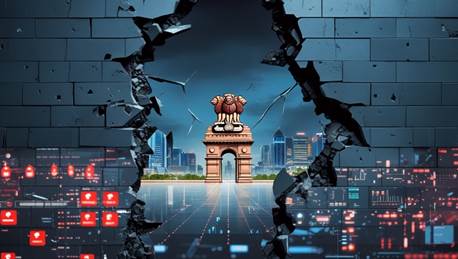A Wake-Up Call for Indian Cybersecurity
When you think of a cyberterrorist, you probably don’t imagine an 18-year-old sitting in a small town in Gujarat. But that’s exactly who was behind a wave of over 50 cyberattacks on Indian government websites in an operation named “Sindoor.”
This isn’t just another hacking story. It’s a wake-up call – for the government, for cybersecurity professionals, and for everyday citizens who assume that national infrastructure is un-hackable.
The breach raises urgent questions about how prepared India really is to defend its digital borders — especially when the threat comes from within.
What Happened: Operation Sindoor and the Teen Behind the Attacks

The Gujarat Anti-Terrorism Squad (ATS) arrested Jasim Shahnawaz Ansari, an 18-year-old from Nadiad, for allegedly orchestrating coordinated cyberattacks against multiple Indian government departments.
- The attacks targeted critical systems in defence, finance, and aviation.
- The teen reportedly carried out the attacks after India’s military response to the Pahalgam terror attack.
- He ran a Telegram group called “AnonSec” to coordinate attacks and spread anti-India propaganda.
Despite his age, he had managed to teach himself advanced cyber intrusion techniques using freely available tools and tutorials online.
3. How a Teen Bypassed India’s Digital Defences

How does a teenager manage to pull off something that should require elite skills?
Here’s how:
- Free access to online hacking forums and tools
- DDoS (Distributed Denial-of-Service) attacks that overwhelm systems with traffic
- Poorly secured government websites, some running outdated software
- Lack of real-time monitoring and threat detection
He didn’t need insider access. He needed opportunity — and the vulnerabilities were already there.
The Bigger Picture: Youth, Cyber Skills, and Radicalisation

This story isn’t just about one hacker. It’s a red flag waving in the middle of a perfect storm:
- Tech-savvy youth
- Unfiltered access to radical content online
- Easy-to-learn cyberattack techniques
- Little oversight or digital awareness in smaller towns
Young people, often feeling powerless or disillusioned, are being recruited into ideological conflicts through Telegram groups, YouTube tutorials, and encrypted chats.
The Real Risk: What This Means for National Cybersecurity
India’s digital infrastructure is growing rapidly — and that growth is a double-edged sword.
Risks now include:
- Insider threats from radicalised youth
- Underfunded cybersecurity in critical government sectors
- Massive attack surfaces due to increased digitalisation
- Reputational damage and geopolitical implications
When attacks like these succeed, they don’t just take down websites — they undermine trust in digital governance itself.
Moving Forward: What India Needs to Do Now
India’s cybersecurity strategy can’t be reactive anymore. It has to be proactive, aggressive, and deeply integrated into national defence planning.
Here’s where we start:
- Invest in cybersecurity education in schools and colleges
- Fund dedicated cyber units in local and central governments
- Harden government systems with regular audits and patch cycles
- Monitor extremist digital spaces to prevent radicalisation
- Create legal frameworks that can adapt to evolving digital crimes
And crucially: empower and employ the same youth who might otherwise be lured into this world, through white-hat programs, ethical hacking courses, and mentorship opportunities.
Conclusion: We’re Only as Strong as Our Weakest Link

This wasn’t just a technical breach. It was a symbolic one. It showed that even the most secure-seeming systems are only as strong as the people, processes, and priorities behind them. In the digital age, cybersecurity isn’t a luxury — it’s national security. And it’s time we started treating it that way.
Operation Sindoor is a stark reminder that our biggest digital threats won’t always come from abroad — they can come from a teenager with a laptop and internet access.
India doesn’t just need stronger systems; it needs more skilled cybersecurity professionals. From ethical hackers to threat analysts, we must train and empower the next generation to defend our digital borders.
“Cybersecurity isn’t just a job. It’s a national service”
Visit Digived Academy to learn more about our Cybersecurity Training programs and start your journey as cybersecurity professional today.
Contact Us
For more information about our courses, schedules, and enrolment process, visit our website or contact us at.
Website: www.digived.academy
Email: admission@digived.academy
Phone: +91-9019299971



